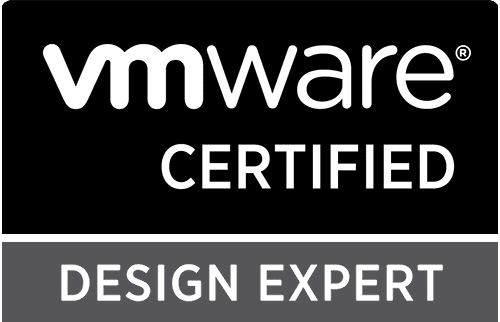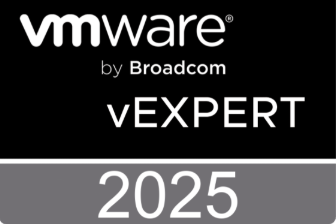It is sometimes hard to imagine that the public cloud consumption model has only been around for about 15 years. However, cloud consumption has grown exponentially, and in the last couple of years, we've seen that for most customers, it's no longer a question of "if" to use the public cloud, but instead, it's a question of "how". According to Gartner, the Global Cloud Revenue will rise from $408 Billion in 2021 to $474 Billion in 2022. In the same study, Gartner predicts that more than 85% of customers will embrace a cloud-first principle by 2025. To be honest, whether it is 85%, 75%, or 95% is frankly not relevant at all. The main conclusion is that the public cloud will continue to grow significantly in the coming years and that most customers will use the public cloud in some form or way.
But the last few years have also seen another important trend. Until a few years ago, the perception in the market was that customers would eventually migrate all their applications to a single public cloud provider and many people were (and some still are) debating which cloud provider would come out on top. Today, we see that customers are using multiple cloud providers and that many customers are also strategically running on-premises private clouds alongside their public cloud environments. In addition, cloud providers like Google offer multi-cloud and hybrid cloud solutions. Hence, customers have the freedom to run their applications and applications where they run best, such as Google Anthos and, of course, Google Cloud VMware Engine.
Why so many cloud migrations fail
Many customers have spent a lot of time and effort migrating their entire application landscape to the public cloud in recent years. Unfortunately, many of these ambitious plans have stalled along the way. At first glance, it seems very attractive to get rid of your entire IT infrastructure and run all your applications on an on-demand cloud infrastructure that is also managed mainly for you. However, many unsuccessful cloud migrations have taught us that not every application is suitable for running in the cloud. There are still about 90 million Virtual Machines running in data centers worldwide, and most of these Virtual Machines host traditional n-tier applications.
Although the hyperscaler IaaS environments can technically run these types of applications, many benefits of public cloud are not fully achieved without radically adapting the applications. 'Pay as you go' is a great promise. Still, to ensure that a traditional application can dynamically scale up and down, you will have to replatform the application so that it can make use of auto-scaling capabilities. In addition, if your traditional application relies heavily on the underlying cloud infrastructure for High Availability and Resiliency, you probably don't want to lift and shift it into a single cloud Availability Zone. The hyperscaler cloud environments are - by nature - much better suited for cloud-native applications that are designed with a 'design for failure' mindset.
Carelessly lifting and shifting all your applications into a public cloud environment will likely introduce risks, deliver low business value, and skyrocket your monthly cloud bill. Just look at the results from Sarah Wang and Martin Casado from Andreessen Horowitz's study on the cost of cloud. They concluded that "Repatriation results in one-third to one-half the cost of running equivalent applications in the cloud." In other words, running applications on an on-premises / private cloud infrastructure could save you up to 50% in costs instead of running them in the cloud. Cloud has been the most significant paradigm shift in the history of computing, but you should think hard about what you want and don't want to run in the cloud.
Forrest Brazeal (Head of Content at Google Cloud) created the "Lift + Shift Shot Clock" to perfectly visualize you are 'on the clock' with growing risks and challenges as time progresses, while the value of your "lift and shift" approach is quickly declining. At about 18 months, the risks and challenges surpass the value, and the 'shot clock' expires.

What is a successful cloud migration approach?
So, how do you plan and design a proper cloud migration where you are set up for success instead of failure? Your application landscape determines your cloud strategy. Every application is mapped on a specific migration path in a successful cloud migration. In December 2010, Gartner published a Research Paper written by Principal Research Analyst Richard Watson called "Migrating Applications to the Cloud: Rehost, Refactor, Revise, Rebuild, or Replace?". This paper introduced the original "5 Rs model" that describes five migration choices to migrate applications to the cloud. Google Cloud adopted a variation of this model in their Accelerated Migration Approach:
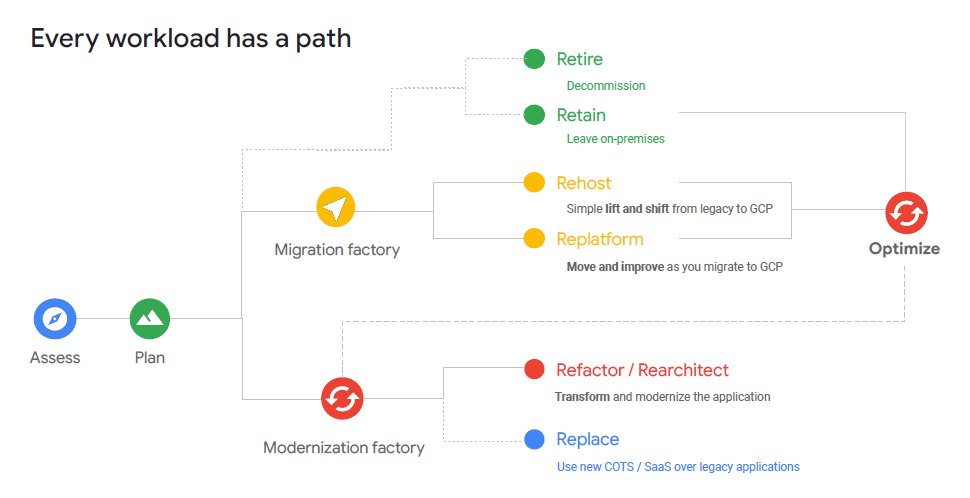
For this article, let's ignore the Retire, Retain, and Replace paths and focus on Rehost, Replatform, and Refactor / Rearchitect. Everyone typically agrees that refactoring your strategic, differentiating applications to cloud-native applications fully optimized for public cloud is the desired end-state. But budget, available time, skills, expertise, and experience are valuable and extremely scarce to most customers. How will you ever refactor your 300+ traditional enterprise applications in time? And even more important, these applications are typically commercial of the shelf (COTS) where you don't even have access to the source code. The reality is that you will not be able to refactor all these applications.
Seamlessly extend your VMware data Center with Google Cloud VMware Engine
So that leaves Rehost or Replatform as possible migration approaches. Remember the 90 million Virtual Machines still running on-premises we talked about earlier? These typically run on VMware vSphere. Now, imagine extending your VMware vSphere data center into Google Cloud Platform and being able to seamlessly migrate your Virtual Machines that run your traditional enterprise applications without complex conversions or optimizations. Imagine protecting your existing IT investments and being able to manage all your VMware applications from a single, integrated view without retraining your staff. And best of all, imagine combining all these benefits with unlocking the massive potential of Google Cloud Platform to drive business innovation and convert data into insights and actionable intelligence with services like Google BigQuery, Anthos, and AI.
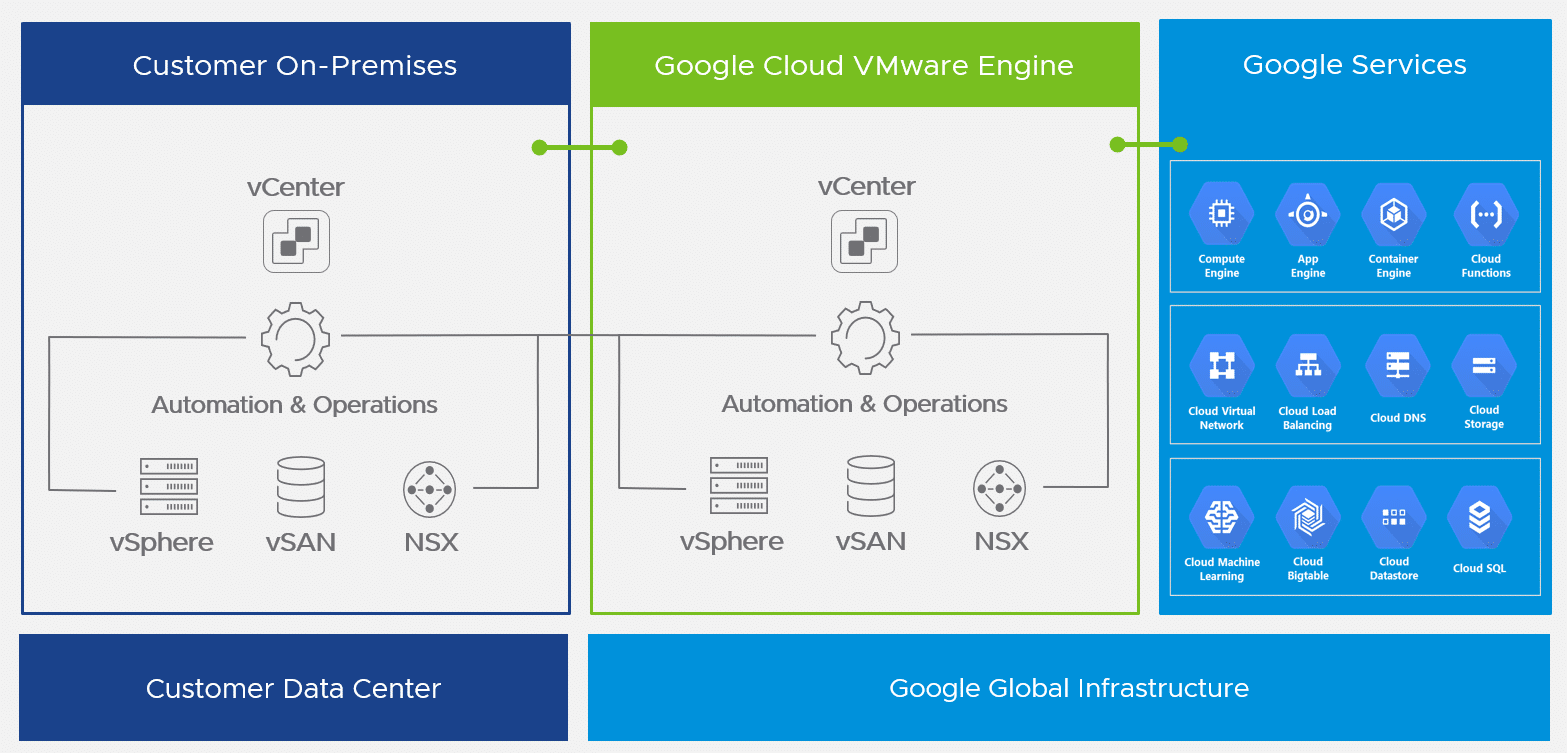
This is precisely where Google Cloud VMware Engine can be an essential solution to accelerate and drastically simplify your cloud migrations. Google Cloud VMware Engine is a fully managed VMware SDDC running VMware Cloud Foundation. It runs on dedicated physical infrastructure and combines the enterprise reliability of VMware technology with the scalability and flexibility of Google Cloud Platform.
Migrate hundreds of applications in weeks instead of months or even years
Leveraging VMware HCX, you can extend your on-premises infrastructure into Google Cloud VMware Engine and migrate your applications using various migration types, such as Bulk Migration, vMotion, Cold Migration, and others. There is a suitable migration type for practically every migration requirement. This migration is very straightforward because you are migrating from a VMware infrastructure to a (managed cloud) VMware infrastructure. It can be executed in weeks instead of months or years with proper planning. Your VMware admins have probably performed these types of migrations many times already!
Where does Google Cloud VMware Engine fit in your cloud migration strategy?
It's important to understand how to position Google Cloud VMware Engine in a cloud migration strategy. On the one hand, we see customers strategically choosing a hybrid or multi-cloud strategy where the VMware Cloud Foundation-powered Private Cloud, with deep integrations in VMware vRealize Cloud Automation and Cloud Management solutions, is very much a strategic part of the desired end state. For these customers, it makes perfect sense to standardize their IaaS capabilities on VMware technology to create that consistent infrastructure with consistent operations across clouds and data centers.

From an architectural and even business perspective, it could be cumbersome to run some IaaS applications on-premises on VMware Cloud Foundation, some IaaS applications on Google Cloud VMware Engine (powered by VMware Cloud Foundation!), and other applications native on Google Cloud Compute Engine. So why not standardize your IaaS applications on VMware technology and optimize this experience?
On the other hand, we see customers looking at a data center exit strategy. Managing data centers and IT infrastructure is not a core business for many customers. With so many possibilities to consume IT infrastructure from the cloud, it sometimes makes no sense to keep investing in the on-premises data center. For example, when a significant hardware refresh is coming up, or a data center lease expiration date is closing in, software contracts are up for renewal … customers look at solutions like Google Cloud VMware Engine to evacuate their data centers instead of investing in the on-premises data center. A lift and shift bulk migration to Google Cloud VMware Engine makes much sense with such compelling events.
But it is essential to understand in these cases that this is just a first step in the cloud migration strategy. For these customers to fully benefit from the cloud, they will need to assess, plan, migrate and optimize their applications using the accelerated migration approach described earlier. The big difference (but also benefit) is that the starting point is Google Cloud VMware Engine, so your applications are already running on the Google Cloud Platform. This makes replatforming and rearchitecting your applications significantly more accessible thanks to the native services integration capabilities of Google Cloud VMware Engine and the tight integration with the VMware Tanzu App Modernization portfolio.
ITQ's recipe for a successful cloud migration
ITQ has many years of experience helping customers succeed with cloud technology. Our passion for technology is deeply rooted in our company and culture, but we're even more excited by what it can help your business achieve. Implementing the cloud technology itself is very important, but it is a relatively small portion of our approach. We guide your organization through the different phases of the cloud migration in three high-level steps:
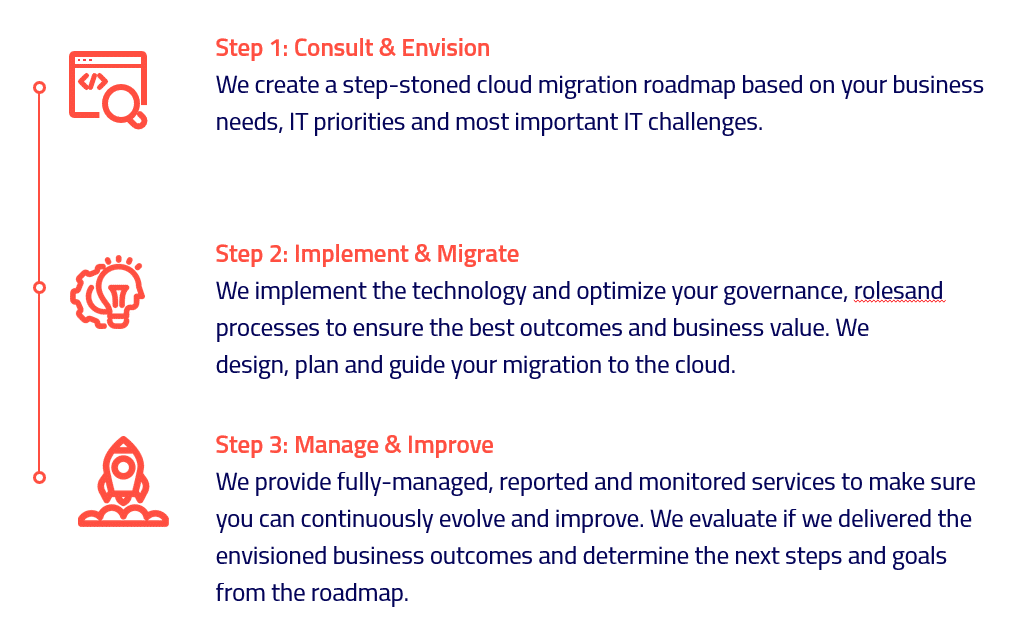
Our approach for migrating to Google Cloud is closely aligned with the Google Accelerated Migration approach. We assess your existing infrastructure and organization, plan your migration priorities, prepare your foundations, migrate waves of workloads, and optimize workloads and operations to build value from the cloud.
ITQ understands enterprise data centers and cloud
As a highly specialized VMware cloud partner, we differentiate by our unique and deep understanding of your VMware data centers and your VMware-backed workloads. We understand your enterprise IT environment and the complexities this can bring to your cloud migration. We also have a deep understanding of Google Cloud Platform and the unique cloud infrastructure services the platform delivers. Combining these two areas of expertise makes ITQ your best partner to migrate to Google Cloud. And with a team of almost a hundred highly skilled professionals across The Netherlands, Belgium, and Germany, we cover the best part of Europe, so there is always an ITQ team near you.
We offer a wide range of services to help you along your cloud journey, regardless of your maturity level. We deliver a wide range of cloud enablement services such as Cloud Readiness Assessments, Technical Assessments, Application Assessments, Proof of Concepts, and full journey cloud migrations. So, if you are thinking about or are tasked with migrating (parts of) your VMware environment to the public cloud, please reach out to your ITQ representative to discuss how ITQ and Google Cloud can help you accelerate!


